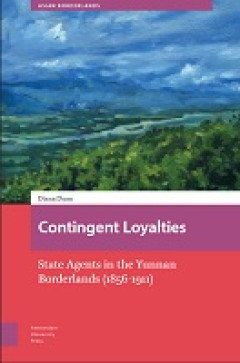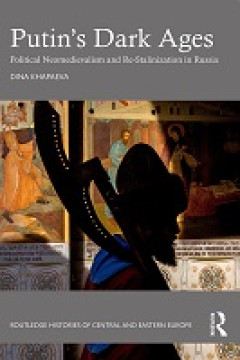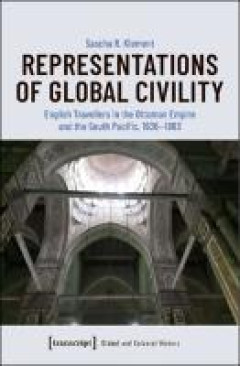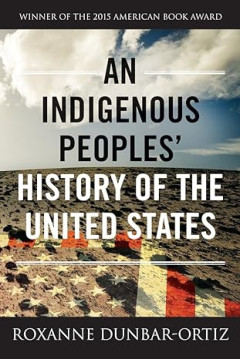Ditapis dengan
E-book Religion in World History
The evidence proves that since the remote past religion has been a part of our mental emotional make up. Even non believers usually agree that the term homo religiosus aptly describes the human experience. Men and women by their nature are religious, and efforts to eliminate religion as many social and political movements have done since the eighteenth century, come up short. They ultimately fa…
- Edisi
- -
- ISBN/ISSN
- 0415314585
- Deskripsi Fisik
- 193 hlm
- Judul Seri
- -
- No. Panggil
- 902 SUP r

E-book Contingent Loyalties: State Agents in the Yunnan Borderlands (1856-1911)
From the mid-nineteenth-century Hui rebellions, which challenged centralised state control, to the early-twentieth-century revolutions, which led to Yunnan’s decades-long independence, local actors shaped the history of Yunnan through their extensive cross-border networks and contradictory roles in the attempted state consolidation of this contested area. Among the local elites, the state age…
- Edisi
- -
- ISBN/ISSN
- 9789048558995
- Deskripsi Fisik
- 318 halaman
- Judul Seri
- -
- No. Panggil
- 950 DUA c

E-book Putin’s Dark Ages: Political Neomedievalism and Re-Stalinization in …
Two decades before the war against Ukraine, a “special operation” was launched against Russian historical memory, aggressively reshaping the nation’s understanding of its history and identity. The Kremlin’s militarization of Russia through World War II propaganda is well documented, but the glorification of Russian medieval society and its warlords as a source of support for Putinism ha…
- Edisi
- -
- ISBN/ISSN
- 9781032571461
- Deskripsi Fisik
- 293 halaman
- Judul Seri
- -
- No. Panggil
- 947 KHA p
E-book Cities, Monuments and Objects in the Roman and Byzantine Levant
Cities, Monuments and Objects in the Roman and Byzantine Levant celebrates Gabriel Mazor and his lifetime of work at the monumental city of Nysa-Scythopolis, Bet She?an Bays?n. This metropolis, part of the storied Decapolis, or league of ten cities, that flourished during the Hellenistic, Roman-Byzantine and very early Islamic periods until the devastating earthquake of AD 748, has been the sin…
- Edisi
- -
- ISBN/ISSN
- 9781803273358
- Deskripsi Fisik
- 318 halaman
- Judul Seri
- -
- No. Panggil
- 938.0

E-book Representations of Global Civility: English Travellers in the Ottoman …
Perhaps unexpectedly, English travel writing during the long eighteenth century reveals a discourse of global civility. By bringing together representations of the then already familiar Ottoman Empire and the largely unknown South Pacific, Sascha Klement adopts a uniquely global perspective and demonstrates how cross-cultural encounters were framed by Enlightenment philosophy, global interconne…
- Edisi
- -
- ISBN/ISSN
- 9783839455838
- Deskripsi Fisik
- 270 halaman
- Judul Seri
- -
- No. Panggil
- 909 KLE r
E-book London’s Waterfront and its World, 1666–1800
This volume, covering the period 1666–1800, considers the archaeology of the port of London on a wide scale, from the City down the Thames to Deptford. During this period, with the waterfront at its centre, London became the hub of the new British empire, contributing to the exploitation of people from other lands known as slavery.
- Edisi
- -
- ISBN/ISSN
- 9781803276557
- Deskripsi Fisik
- 302 halaman
- Judul Seri
- -
- No. Panggil
- 930.1 SCH l
E-book Becoming Global Asia : Contemporary Genres of Postcolonial Capitalism …
In 2007, a Smithsonian Magazine article declared, “Singapore Swing: Peaceful and Prosperous, Southeast Asia’s Famously Uptight Nation Has Let Its Hair Down.” Remarking on his return trip to Singapore, David Lamb, former Southeast Asia bureau chief of the Los Angeles Times,marveled, “This tiny nation—whose ascendancy from malariainfested colonial …
- Edisi
- -
- ISBN/ISSN
- 9780520396678
- Deskripsi Fisik
- 230 hlm
- Judul Seri
- -
- No. Panggil
- 959.57 NAR b
The Romanovs
The Romanov family ruled Russia from 1613 to 1917. They ascended the throne at the end of one of the most critical periods of Russian history, known as the Time of Troubles (1589 Ü 1613). The last tsar of the previous dynasty, a weak son of Ivan the Terrible, died in 1589.
- Edisi
- -
- ISBN/ISSN
- -
- Deskripsi Fisik
- 148 halaman, ilus.
- Judul Seri
- -
- No. Panggil
- 947 GRA t

E-book An Indigenous Peoples' History of the United States
Today in the United States, there are more than five hundred federally recognized Indigenous nations comprising nearly three million people, descendants of the fifteen million Native people who once inhabited this land. The centuries-long genocidal program of the US settler-colonial regimen has largely been omitted from history. Now, for the first time, acclaimed historian and activist Roxanne …
- Edisi
- -
- ISBN/ISSN
- -
- Deskripsi Fisik
- 270 halaman, ilus.
- Judul Seri
- -
- No. Panggil
- 973 DUN a
E-book Moving Natures : Mobility and Environment in Canadian History
In perhaps the most striking passages of The Dominion in 1983, the author writing under the pseudonym Ralph Centennius predicted the use of “light and beautiful rocket cars, which [dart] through the air at the rate of sixty miles in one minute.” Constructed of polished metal, these fifty-seat rocket cars would fly through the sky at heights of up to fifteen hundred feet and land on rails wh…
- Edisi
- -
- ISBN/ISSN
- 9781552388600
- Deskripsi Fisik
- 355 hlm
- Judul Seri
- -
- No. Panggil
- 971 BRA m
 Karya Umum
Karya Umum  Filsafat
Filsafat  Agama
Agama  Ilmu-ilmu Sosial
Ilmu-ilmu Sosial  Bahasa
Bahasa  Ilmu-ilmu Murni
Ilmu-ilmu Murni  Ilmu-ilmu Terapan
Ilmu-ilmu Terapan  Kesenian, Hiburan, dan Olahraga
Kesenian, Hiburan, dan Olahraga  Kesusastraan
Kesusastraan  Geografi dan Sejarah
Geografi dan Sejarah